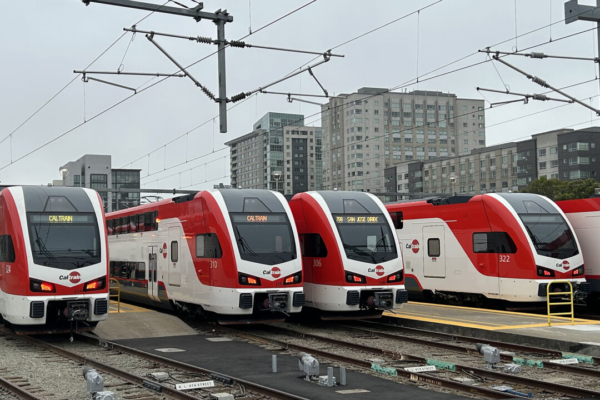On August 11, a brand new all-electric commuter railway line made its debut and began providing services in the San Francisco Peninsula and Santa Clara Valley.
Seven years after the California Rail Authority (Caltrain) embarked on this $2.44 billion project, they introduced a new fleet of electric trains. The final cost of the project exceeded the initial budget by $462 million and was $129 million higher than the Federal Transit Administration’s prediction.
Two trains from the fleet of 19 electric trains completed their inaugural journey between San Jose and San Francisco last Sunday, August 11. Officials noted that the service on this route will be limited for the remaining days of August. Caltrain plans to deploy two new trains every week starting September 21.
Jerold Chinn, a San Francisco native, was one of the passengers on the maiden voyage of the train. He shared his experience on social media, saying, “The train is very quiet.”
California and federal officials also experienced the 30-minute journey. Former Speaker of the House Nancy Pelosi expressed her honor in being on the inaugural ride of Caltrain’s new electric train, stating that “Caltrain’s electrification means shorter commuting times, cleaner air, and higher paying job opportunities in the Bay Area and beyond.”
Caltrain stated that the project created 33,000 job opportunities across 36 states, including the installation of the electrification train’s overhead system and new signal systems.
Compared to the travel time of over 65 minutes for other trains, the new electric trains will provide faster service between San Francisco and San Jose, with a travel time of under one hour.
Caltrain anticipates that the ability of the new trains to accelerate and decelerate better than diesel trains will increase transportation capacity by 20%, providing greater flexibility for urban accessibility within the entire railway system.
Moreover, Caltrain mentioned in a statement that these trains will help California achieve its regional and state climate action goals by reducing greenhouse gas emissions, improving air quality, and alleviating traffic congestion.
The organization estimates that these trains will reduce 250,000 metric tons of carbon dioxide emissions annually, which is equivalent to eliminating 55,000 cars from the roads each year.
In the new train compartments, each forward-facing seat is equipped with wireless internet, power outlets, energy-efficient lighting, and an enhanced climate control system.

